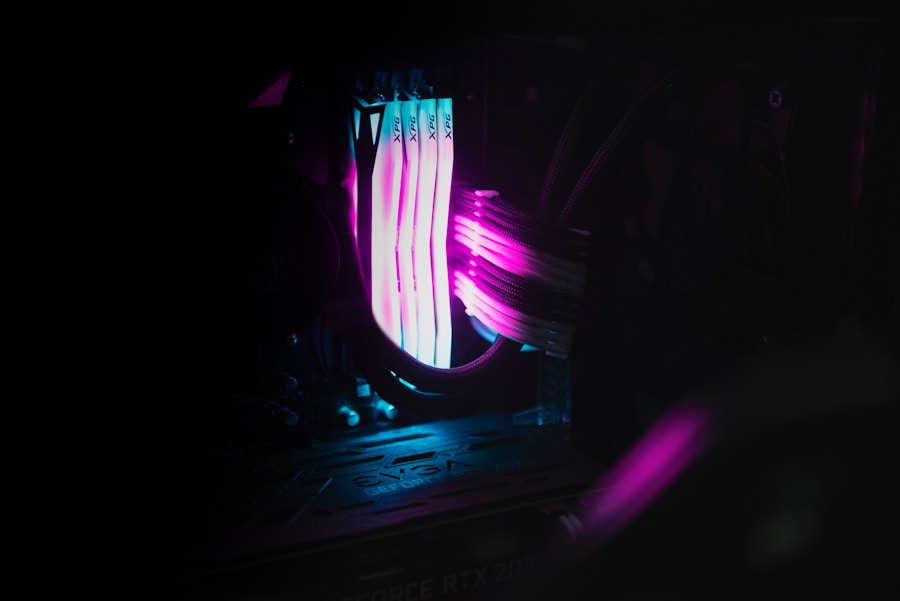Graphics Processing Units (GPUs) are specialized electronic circuits designed to rapidly manipulate and alter memory to accelerate the creation of images in a frame buffer intended for output to a display device. Originally developed for rendering 3D graphics in video games, GPUs have evolved to become essential components in a wide range of applications, including scientific simulations, artificial intelligence, and cryptocurrency mining. The parallel processing capabilities of GPUs make them well-suited for handling large amounts of data and performing complex calculations at high speeds. As a result, GPU technology has become increasingly important in the field of computing, driving innovation and enabling new possibilities in various industries.
The Evolution of GPU Technology
The evolution of GPU technology can be traced back to the early 1980s when the first graphics accelerators were developed to offload the processing of 2D and 3D graphics from the CPU. Over the years, GPUs have undergone significant advancements in terms of performance, efficiency, and capabilities. The introduction of programmable shaders in the late 1990s allowed for more flexible and realistic rendering of graphics, leading to a revolution in visual computing. In the early 2000s, the emergence of general-purpose computing on GPUs (GPGPU) enabled GPUs to be used for a wide range of non-graphics tasks, such as scientific simulations and data processing. More recently, the development of deep learning frameworks and neural network architectures has further expanded the role of GPUs in accelerating machine learning and artificial intelligence applications.
The Role of GPU Technology in the Future of Computing
As computing continues to advance, the role of GPU technology is expected to become even more prominent. With the increasing demand for processing large amounts of data in real-time, GPUs are well-positioned to play a crucial role in enabling the next generation of computing technologies. From autonomous vehicles and virtual reality to advanced medical imaging and scientific research, GPUs are driving innovation and pushing the boundaries of what is possible in various fields. The ability of GPUs to handle complex calculations and parallel processing tasks makes them essential for powering the future of computing, particularly in areas such as machine learning, data analytics, and high-performance computing.
Advancements in GPU Technology
Advancements in GPU technology have been driven by the need for higher performance, improved efficiency, and enhanced capabilities. Over the years, GPU manufacturers have made significant strides in developing more powerful and energy-efficient GPUs through innovations in architecture, manufacturing processes, and software optimization. The introduction of technologies such as ray tracing, tensor cores, and deep learning accelerators has further expanded the capabilities of modern GPUs, enabling them to handle increasingly complex workloads with greater efficiency. Additionally, advancements in memory technologies, such as high-bandwidth memory (HBM) and GDDR6, have allowed for faster data access and improved overall system performance.
Applications of the Latest GPU Technology
The latest GPU technology has found applications in a wide range of industries and fields, revolutionizing how tasks are performed and accelerating innovation. In the field of artificial intelligence, GPUs are being used to train and deploy deep learning models for tasks such as image recognition, natural language processing, and autonomous decision-making. In healthcare, GPUs are being utilized for medical imaging and drug discovery, enabling researchers to analyze large datasets and simulate complex biological processes with greater speed and accuracy. In finance, GPUs are being used for risk analysis, fraud detection, and algorithmic trading, allowing for faster and more accurate decision-making in a highly competitive industry.
Challenges and Opportunities in the Development of GPU Technology
While GPU technology has made significant advancements, there are still challenges that need to be addressed in order to fully realize its potential. One of the main challenges is the increasing demand for more powerful and energy-efficient GPUs to handle the growing complexity of modern workloads. This requires continued innovation in architecture design, manufacturing processes, and software optimization to deliver higher performance while minimizing power consumption. Additionally, as the use of GPUs becomes more widespread across different industries and applications, there is a need for standardization and interoperability to ensure seamless integration with existing systems and workflows.
The Impact of GPU Technology on Industries and Society
The impact of GPU technology on industries and society has been profound, driving innovation and enabling new possibilities across various fields. In the entertainment industry, GPUs have revolutionized the creation of visual effects and virtual environments, allowing for more immersive and realistic experiences in movies, video games, and virtual reality applications. In healthcare, GPUs have accelerated medical imaging and drug discovery, leading to faster diagnosis and more effective treatments for patients. In finance, GPUs have enabled faster and more accurate analysis of market data, improving decision-making and risk management for financial institutions. Overall, GPU technology has had a transformative impact on industries and society, paving the way for new advancements and opportunities in the future.


